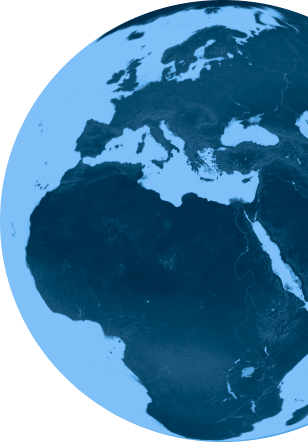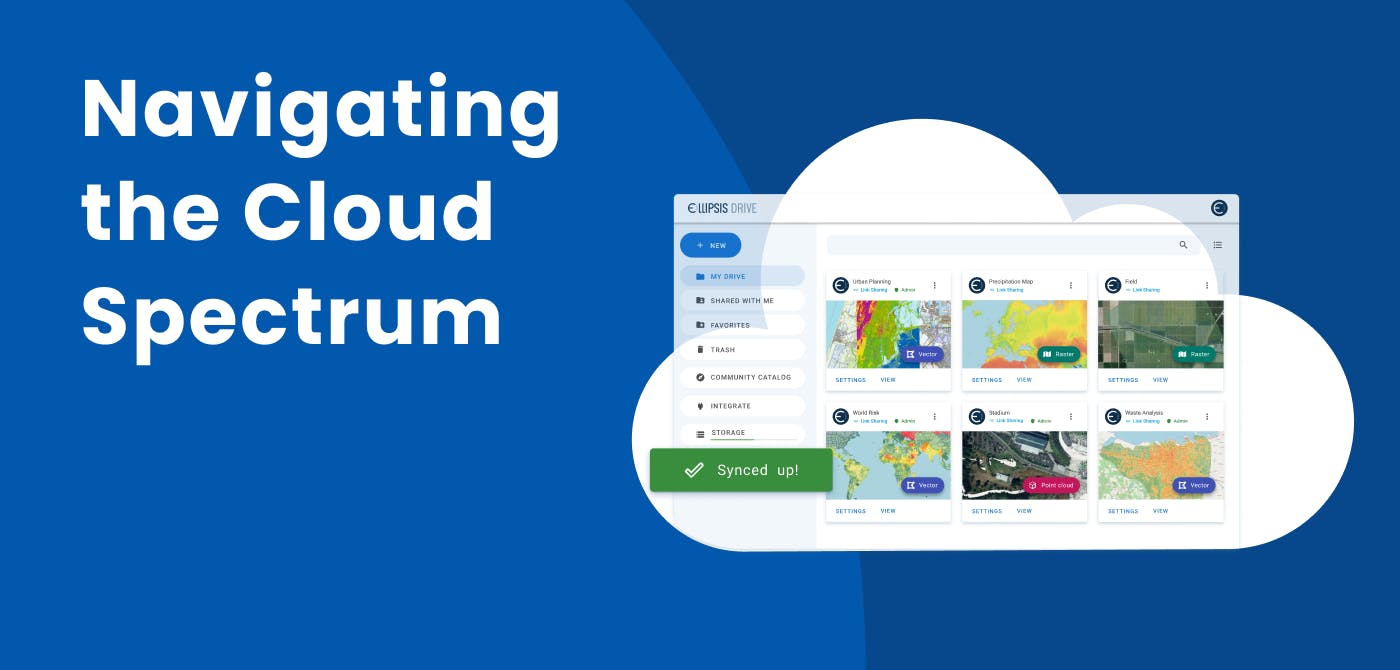GIS
A Quick Guide to the Cloud Optimized GeoTIFF

Contents
When creating analysis-ready data or derived data products in the New Space and Remote Sensing industry, the concept of Cloud Optimized GeoTIFF (or COG) can’t have escaped your attention. However, most professionals in our space are still wondering how well COGs can address the problems they are designed to solve, if at all.
Harbouring some reservations is not uncalled for. After all, it’s not the first time that a new file format has entered the scene claiming to be the answer to our troubles. Coming from an industry player that is known for valuing interoperability and facilitating the consumption of spatial data regardless of its original format, this article will help you understand the value that Cloud Optimized GeoTIFF may, or may not, bring to your operation.
We will unpack all you need to know about COGs; What they are, how they work, and in what ways they should and should not be used.
But first let’s start off with the all important basics!
Contents
What is a GeoTIFF and what are GeoTIFF files?
GeoTIFF is a metadata standard or a file format that allows georeferencing information to be attached to an image file. Satellite images obtained from Earth Observation sources can be geotagged to give you a GeoTIFF file format.
For simplicity purposes let’s break down the term into 2 parts and understand their significance - Geo and TIFF
TIFF - The TIFF or ‘Tagged Image File Format’ is an image file format and comes with the ‘.tfw’ extension. It is different from most other image file formats with the key difference being that a TIFF allows for flexible information fields while most other image formats have one image header and fixed fields (containing information like image dimensions and color space specification). These information fields, called 'tags', can range from the fundamentals, such as image dimensions and color space specification, to the more luxurious information like private tags and copyright information.
Why are TIFF files important? Well, the benefit of this system is that almost any information can accompany an image. It’s lean, has little overhead, and comes with the flexibility required to suit any need.
Geo - As the name suggests, Geo signifies the location information in the TIFF file format. A GeoTIFF file is simply a TIFF that has tags allowing you to georeference the image. This tells which part of the Earth’s surface is represented by the image, including for example the bounds and the projection.
Why is the location element important? Seeing the growing relevance and importance of location intelligence to businesses, we are sure you weren’t actually wondering about the practical usefulness of the spatial component of data.
With the basics out of the way, let’s get into the more advanced stuff now!
What is a Cloud Optimized GeoTIFF?
Cloud Optimized GeoTIFFs are GeoTIFFs with a special format. They leverage an HTTP feature called Byte Serving. To give you an example, with Byte Serving you can stream music or video files on the web while skipping forward or backward through the content. So, instead of needing to download the full file, you can tell the server which specific bit you want to see or listen to.
COGs work in the same way. Allowing users to access just the portion of a raster file that they need. Again, this functionality is made possible by leveraging Byte Serving technology and giving the GeoTIFF a specific structure. Looks like the concept is pretty simple after all!
When can a Cloud Optimized GeoTIFF be used?
Simple! When you want to visualize your imagery (or help others visualize your imagery), a Cloud Optimized GeoTIFF allows you to do so on the fly without needing to download the file.
For example: You want to share a GeoTIFF containing a satellite image that you have stored on a file system. With a COG you can give someone access to your file system and enable them to stream views of the TIFF. No need to download it to any local system.
Join the Community
Subscribe to our monthly newsletter to receive the latest blogs, news and updates

What are the challenges of the Cloud Optimize GeoTIFF?
While for the example above, a COG can be a great solution, there are considerations to take into account when thinking about applying them in your day-to-day life. We’ve listed these considerations here:
- Information systems should consist of client, API, and data. This principle is a fundamental rule. However, a COG skips over the API and allows you to access the raw bytes of the file directly. This makes it relatively easy to implement (that’s a win!) but not flexible and not future-proof (that’s a drawback). Kind of a double edged sword.
It is good practice to handle both vector data and raster data in a similar way. After all, raster and vector data are rarely useful without the other. Having a format or protocol for one, that doesn’t work in a similar way for the other, will lead to interoperability issues and annoy consumers of your data. - Cloud Optimized GeoTIFF does not scale indefinitely. It is useful for small to medium-sized rasters, but it cannot fully replace the XYZ protocol. For example, for raster mosaics spanning a nation at high resolution, a GeoTIFF is not practical. This would mean that a data consumer would now have to cope with both COG and XYZ.
- COGs are not very well supported in commonly used JavaScript libraries (currently at least). Leaflet is an example of this.
- There is nothing wrong with the XYZ protocol. It is widely known, widely used, and it fully scales. In fact, from the perspective of the consumer of your data, it is most likely to be viewed as superior.
When is a COG the right answer to your challenges?
By skipping over the need for an API, you are allowing fast and direct access to the raw bytes of your files. When you are sure that this method meets the needs of the consumers of your data, this can be highly beneficial. When you are not sure of this though, or your audience is more varied, it is better to stick with proven IT standards and safeguard your flexibility. This can cost you some more time, but won’t create problems for you or your users down the road.
All things considered, a fair question to ask is whether the convenience for you (the provider of data) outweighs the inconvenience created for the consumers of your data (presumably your colleagues, clients or partners). The answer to that question depends on your use or business case.
Ellipsis Drive’s Spatial Data Drive - A smart alternative to Cloud Optimized GeoTIFF
We recognize that it normally costs an organization a lot more time to create a scalable, safe and flexible system for rendering content. This makes the COG an attractive alternative that can save you time. However, it does come at a cost. If the limitations listed above create reason for worry when considering your (future) needs, Ellipsis Drive is here to provide an alternative. By uploading data to Ellipsis Drive, you are guaranteed your content:
- will be available in all standard web protocols
- requires no configuration for you or your client
- will scale regardless of data size
- has flexible and easy access management
- is easy to search through
- supports server side visualization capabilities
- handles vector and raster data on equal footing
- can be used via plugins for commonly used tools
Conclusion
This article has provided you with a baseline understanding of the concept of Cloud Optimized GeoTIFFs and the relevant considerations around using them in your operations. We hope it helps you make your decisions with confidence!
Do you want to know more about our first-of-its-kind spatial data drive? Contact us today!
What can Ellipsis Drive do for you?
Make spatial data management easy. Connect your data to your target audience in minutes.
Support all popular data endpoints and protocols off-the-shelf.

Related Articles

Navigating the Cloud Spectrum: From Generalist to Specialized, and the Perfect Middle Ground
The modern cloud ecosystem spans a wide spectrum of offerings, from general-purpose infrastructure to highly specialized platforms built for domain-specific tasks. At one end, generalist clouds provi
5 min read

Unlocking the Potential of Data: Comparing Tabular and Non-Tabular Protocols
The world of data is a complex landscape and each year, the complexity of that landscape grows exponentially. A combination of new data capturing technology, data processing technology and demands fo
6 min read

Understanding the importance of GIS in Urban Planning
Cities are robust places filled with life, but before it becomes a cosmopolitan paradise, plenty of ever-evolving complexities are happening behind the scenes to bridge the gaps and create an area spa
3 min read